Disclosure: This article contains affiliate links. We may earn a commission from purchases at no extra cost to you, which helps our travel content.
Miami often conjures images of neon-lit Ocean Drive, bronzed bodies on South Beach, and the pulsating nightlife that has defined its global reputation. But as someone who has spent decades exploring cities through the lens of cultural craftsmanship, I've discovered that Miami's true soul lies beyond its famous shoreline. During a winter weekend escape from Aurora's bitter cold, I traded my mechanic's tools for my camera and wandering feet, determined to uncover the authentic Miami that exists in the shadows of its postcard perfection. What I found was a tapestry of neighborhoods as diverse as my own French-Senegalese heritage—places where art spills from gallery walls onto building facades, where immigrant stories are told through cuisine and craftsmanship, and where the city reveals itself as so much more than a beach destination. Allons-y, my friends—let's discover the real Miami together.
Wynwood: Where Walls Tell Stories
The transformation of Wynwood from neglected warehouse district to global street art mecca reminds me of the Belleville neighborhood in Paris, where I spent my youth watching similar urban evolution unfold. Arriving mid-morning on a Saturday—the perfect time before crowds swell—I was immediately struck by the technical precision of the murals. As someone who appreciates the mechanical precision required in both auto repair and art, I found myself analyzing brushstrokes and spray techniques with professional admiration.
The Wynwood Walls serve as the district's anchor, a curated outdoor museum featuring rotating works by international artists. But venture beyond this sanctioned space and you'll discover the area's true character. I spent hours wandering the grid of streets between NW 2nd Avenue and NW 5th Avenue, where every surface becomes a canvas. The juxtaposition of a Jorge Rodríguez-Gerada portrait against the raw industrial backdrop reminded me that beauty often emerges from unlikely foundations.
What fascinates me most about Wynwood is the ephemeral nature of the art—much like the vintage cars I restore, these works require maintenance, respect, and sometimes complete reinvention. Some murals remain for years, becoming neighborhood landmarks, while others might disappear overnight, replaced by fresh visions.
For photography enthusiasts, I recommend bringing a wide-angle lens to capture the scale of these massive works. The morning light casts the most flattering glow on the eastern-facing walls, while late afternoon sun illuminates the western sides beautifully.
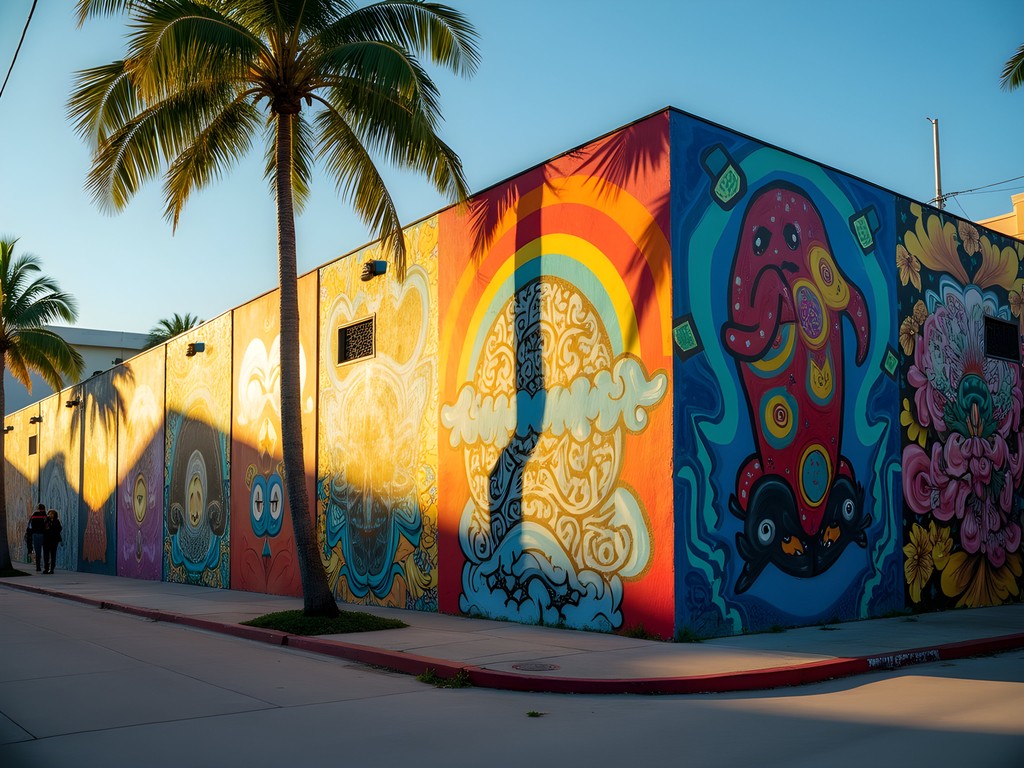
💡 Pro Tips
- Visit on weekday mornings to avoid crowds and capture photos without people in frame
- Join a guided tour with local artists for insider stories behind specific murals
- Stop by Panther Coffee for excellent fuel before your art walk
Little Havana: Cuba's Heart in American Soil
Strolling down Calle Ocho (SW 8th Street) feels remarkably similar to wandering through the immigrant neighborhoods of Paris where I was raised—places where people carried their homeland in their hearts while building new lives. Little Havana pulses with this same energy, a cultural preservation that resonates deeply with me.
My exploration began at Cuban Memorial Boulevard, where monuments tell stories of struggle and resilience. The roosters of Little Havana—both the painted statues scattered throughout the neighborhood and the occasional live ones—reminded me of my grandmother's village in Senegal, where roosters similarly announced the day's beginning.
Domino Park (officially Máximo Gómez Park) offers a glimpse into authentic Cuban-American social life. I spent an hour watching elderly gentlemen hunched over domino tables, their hands moving with the practiced precision that comes only from decades of experience—the same fluid efficiency I recognize in master mechanics who've spent lifetimes perfecting their craft.
The rhythm of Little Havana is punctuated by the scent of cafecito (Cuban coffee) and the sounds of live music spilling from venues like Ball & Chain. For those interested in Cuban culture beyond the surface level, I recommend visiting on the last Friday of the month for Viernes Culturales (Cultural Fridays), when the neighborhood transforms into a vibrant street festival.
After walking several miles, I found myself craving authentic Cuban cuisine. Versailles Restaurant serves as the neighborhood's unofficial gathering place, but I preferred the less touristed El Exquisito, where the ropa vieja transported me directly to Havana without the need for a passport.

💡 Pro Tips
- Visit Domino Park around 3-4pm to see the most animated games
- Try a proper Cuban coffee at ventanita (coffee window) for authentic experience
- Look for cigar rollers demonstrating their craft in shop windows along Calle Ocho
Design District & Midtown: Where Art Meets Architecture
The Miami Design District represents the fascinating intersection of high design, architectural innovation, and public art that makes this city unique. As someone who appreciates the technical precision of both mechanics and design, I found myself analyzing the structural elements of buildings as much as their aesthetic appeal.
The Institute of Contemporary Art (ICA Miami) offers free admission—a rarity in the art world—and houses an impressive collection in a building that's itself an architectural statement. What struck me most was how the Design District balances commercial luxury with genuine artistic expression, creating public spaces that invite interaction rather than mere observation.
The nearby Palm Court features a geodesic dome that reminds me of the engineering principles I apply daily in my shop—the distribution of weight and tension to create something both beautiful and functional. I spent an hour sketching its structure in my travel journal, appreciating the mathematical precision behind its seemingly effortless design.
For photography enthusiasts, I recommend bringing a compact tripod for capturing the architectural details in varying light conditions. The reflective surfaces and geometric patterns throughout the district create fascinating compositions, particularly during golden hour.
Midtown Miami, just south of the Design District, offers a more accessible version of this design-forward approach. The Shops at Midtown provide a pleasant urban strolling experience with cafes and boutiques that feel more approachable than their Design District counterparts. For those seeking creative inspiration without the luxury price tags, this area strikes a perfect balance.
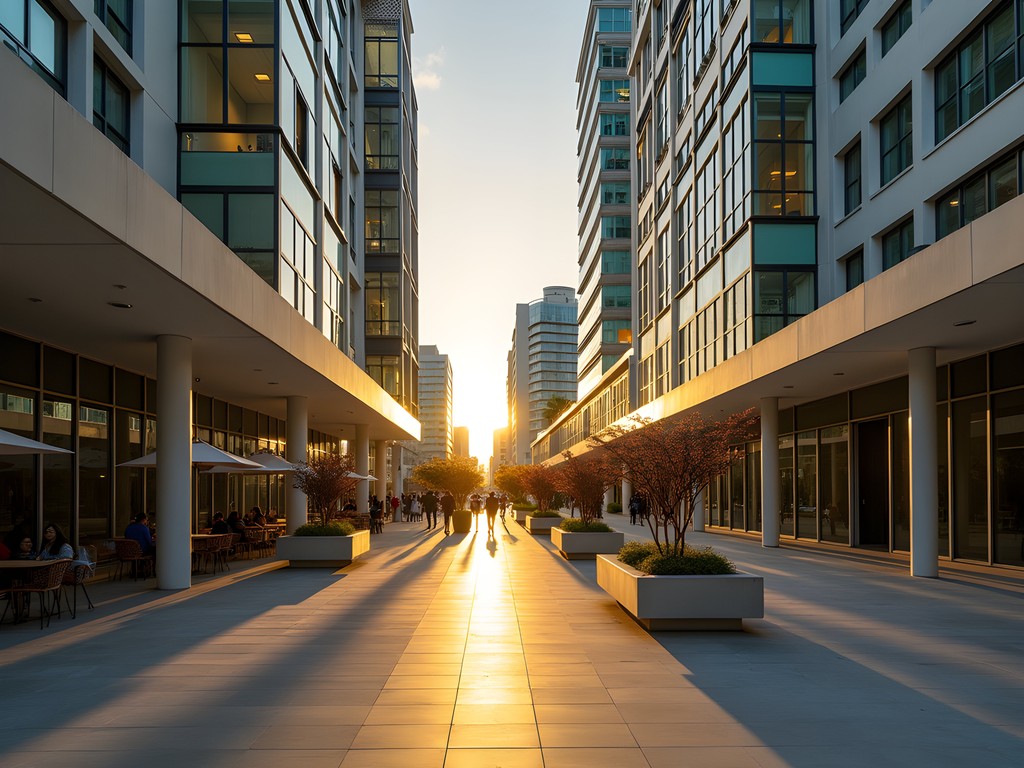
💡 Pro Tips
- Visit the Design District's public art installations with the free map available at the Paradise Plaza information desk
- Check the schedule for free weekend art talks at ICA Miami
- Explore side streets for unexpected architectural gems away from the main plazas
Little Haiti: Cultural Authenticity Beyond the Tourist Trail
Little Haiti offered me perhaps the most authentic connection to my own African heritage during my Miami exploration. This neighborhood, often overlooked by conventional travel guides, pulses with Caribbean influences and preserves Haitian culture with remarkable dedication.
The Caribbean Marketplace, with its distinctive gingerbread architecture inspired by Haiti's Iron Market in Port-au-Prince, serves as the neighborhood's cultural anchor. Inside, vendors sell everything from handcrafted jewelry to medicinal herbs, creating a sensory experience reminiscent of markets I've visited across West Africa.
What drew me most deeply to Little Haiti was the community's commitment to cultural preservation through craftsmanship. At the Little Haiti Cultural Complex, I witnessed artisans creating traditional Haitian metalwork—transforming discarded oil drums into intricate art pieces through techniques passed down through generations. As someone who values the mechanical precision of handcraft, I spent hours discussing techniques with a metal artist named Jean-Baptiste, comparing his methods to the mechanical work I do back in Aurora.
The neighborhood's vibrant murals tell stories of Haitian history, spirituality, and resilience. Unlike Wynwood's sometimes commercial approach, Little Haiti's street art feels more organic and community-driven. The colors here—vivid blues, yellows, and reds—reminded me of my father's descriptions of Dakar's painted buildings.
For those interested in authentic musical experiences, I recommend visiting on a Friday evening when impromptu kompa music sessions often spill onto the streets. I found myself dancing alongside locals outside a small venue on NE 2nd Avenue, the rhythm feeling surprisingly familiar despite being far from both my French and Senegalese roots.
To document this vibrant neighborhood, my mirrorless camera proved invaluable for capturing both detailed shots of craftwork and wider street scenes without being obtrusive.
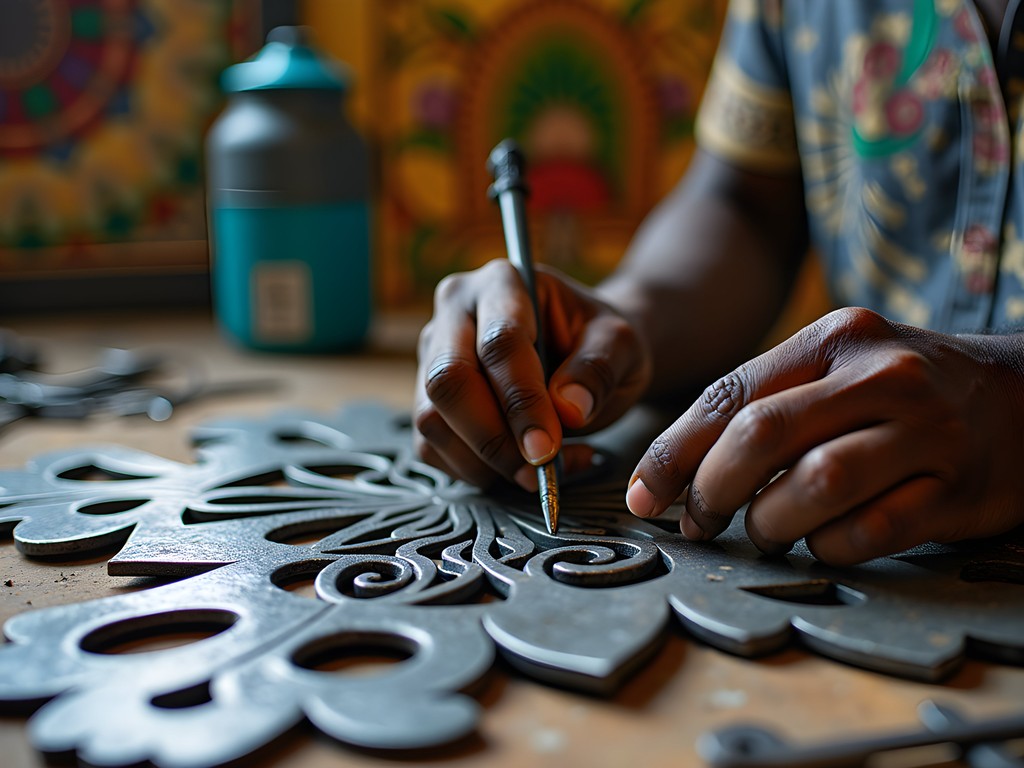
💡 Pro Tips
- Visit the Little Haiti Cultural Center on Saturdays when most community programs are active
- Support local businesses by purchasing directly from artisans rather than souvenir shops
- Try Haitian cuisine at Chef Creole or Tap Tap for authentic flavors
Calle Ocho Art Walk: Where Community Creates Culture
While Wynwood attracts international attention, the Calle Ocho Art Walk in Little Havana offers a more intimate glimpse into how art functions as community expression rather than tourist attraction. Held on the last Friday of each month, this event transforms SW 8th Street into a vibrant celebration of Cuban-American culture through visual arts, music, and cuisine.
Unlike the sometimes commercial feel of other art districts, Calle Ocho's galleries maintain an authenticity that comes from deep community roots. At Futurama 1637 Art Building, I discovered studios where artists work in real-time, happy to discuss their techniques and inspirations. This open-door approach reminded me of my father's auto shop in Paris, where neighborhood children would gather to watch him work, learning through observation.
What makes this art walk special is the seamless integration of multiple art forms—visual art blends with live music, dance performances erupt spontaneously on street corners, and the line between audience and performer blurs beautifully. At Cubaocho Museum & Performing Arts Center, I witnessed an impromptu jam session between formally trained musicians and elderly community members who joined with percussion instruments they pulled from seemingly nowhere.
The technical skill displayed in both traditional and contemporary Cuban art forms impressed me deeply. A painter named Carlos demonstrated a restoration technique for aged canvases that paralleled methods I use for restoring vintage car components—both requiring patience, specialized knowledge, and respect for original craftsmanship.
For those planning to photograph the event, the lighting conditions can be challenging as day transitions to evening. I recommend a low-light lens to capture the vibrant scenes without flash, allowing for more natural documentation of these authentic cultural moments.
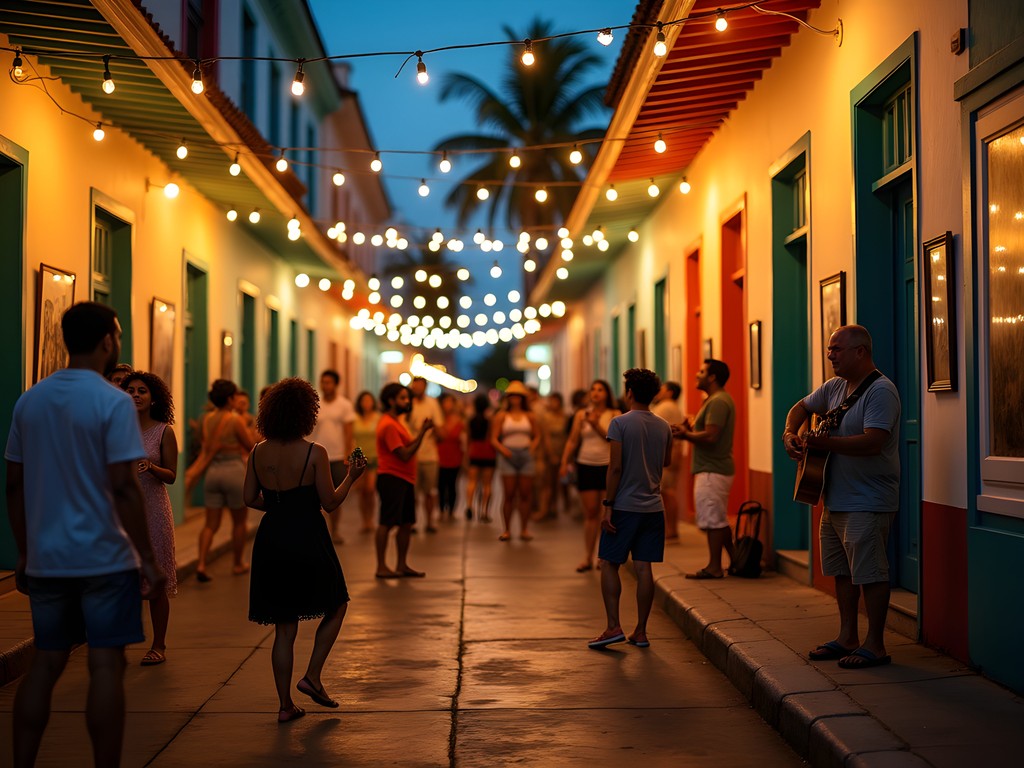
💡 Pro Tips
- Arrive early (around 6pm) to speak with artists before crowds form
- Bring cash for small purchases from artists and street vendors
- Don't rush—the best experiences happen when you linger in one spot long enough to engage with locals
Final Thoughts
Miami reveals itself differently to those willing to venture beyond its famous beaches. Like a well-crafted engine with many working parts, this city functions as an intricate system where each neighborhood contributes its unique cultural energy to the whole. What struck me most was how Miami's immigrant communities—Cuban, Haitian, Venezuelan, and many others—have maintained their cultural authenticity while simultaneously transforming American urban spaces. As someone who has always existed between cultures, I found profound resonance in these neighborhoods where heritage is both preserved and reinvented daily. If you're planning your own Miami exploration, I encourage you to allocate at least one full day away from the shoreline. The true craftsmanship of this city—its art, architecture, cuisine, and community spirit—awaits in these vibrant inland neighborhoods where Miami's heart truly beats. À la prochaine, until next time, when we'll discover another city's hidden cultural mechanics together.
✨ Key Takeaways
- Miami's neighborhood art scenes offer more authentic cultural experiences than beach areas
- Morning and evening hours provide the best light and atmosphere for urban exploration
- Supporting local businesses and engaging with community members creates more meaningful travel experiences
- Cultural preservation through craftsmanship connects communities across different heritages
📋 Practical Information
Best Time to Visit
November through April, with January-February offering ideal temperatures
Budget Estimate
$150-250 per day including mid-range accommodations, meals, and transportation
Recommended Duration
Minimum 3 days, ideally a long weekend (4-5 days)
Difficulty Level
Intermediate - Requires Some Planning And Navigation Between Non-Adjacent Neighborhoods
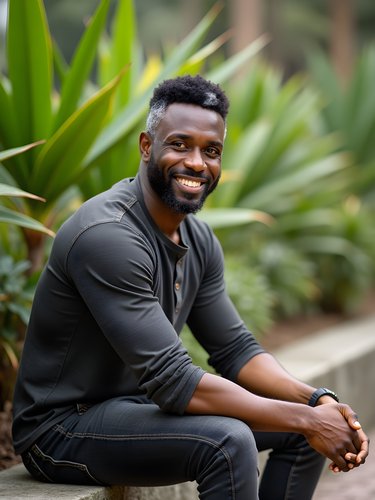
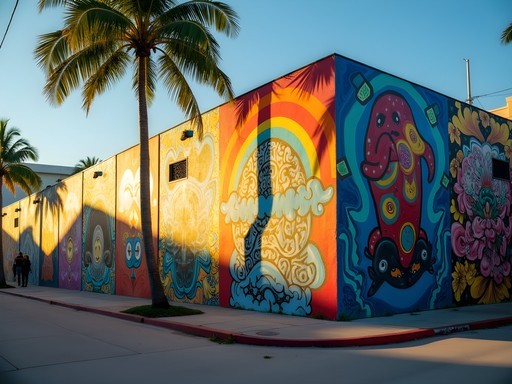
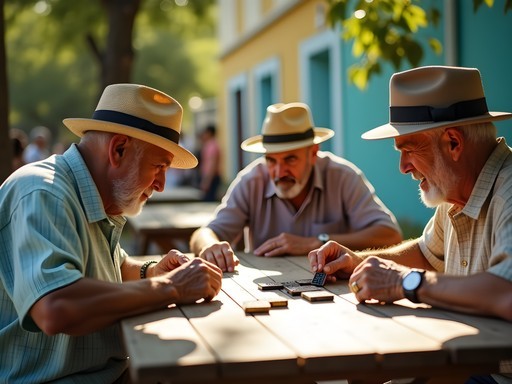
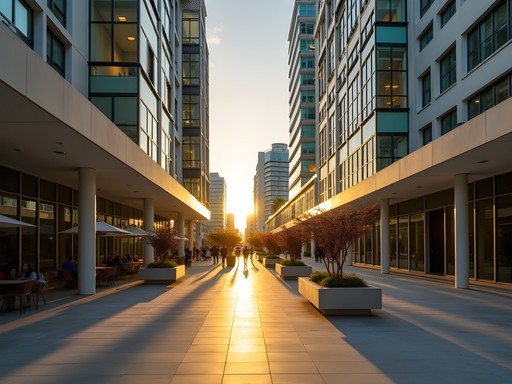
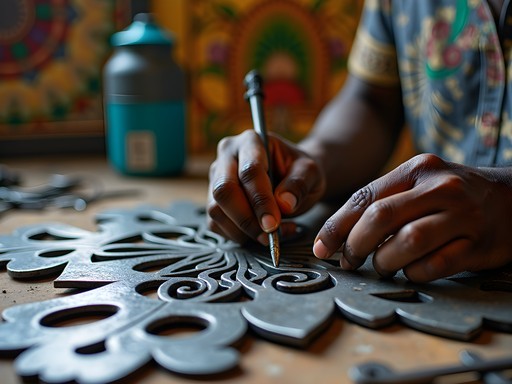
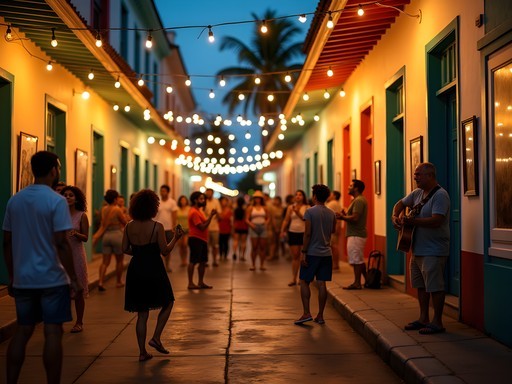


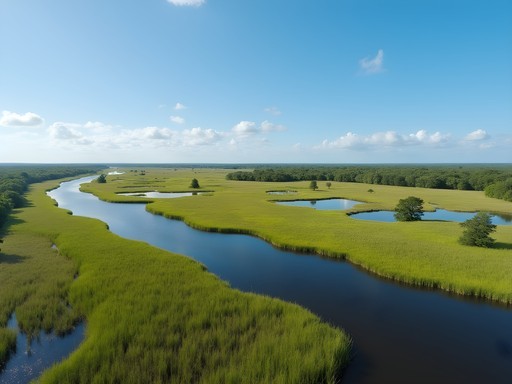
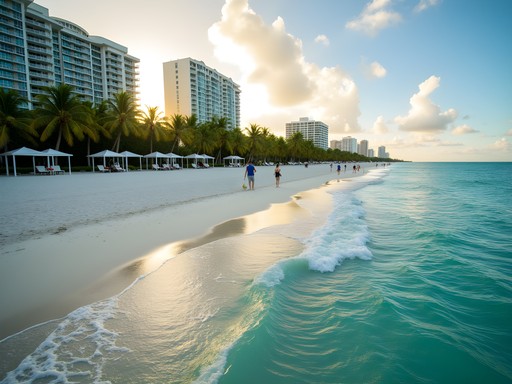
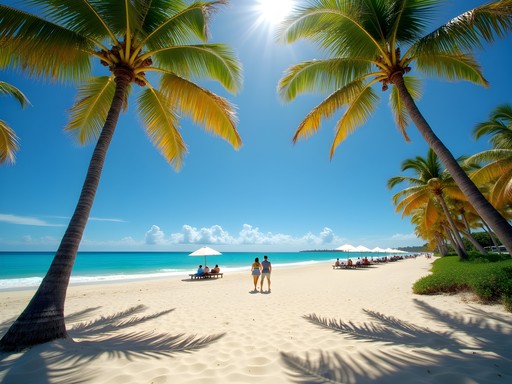
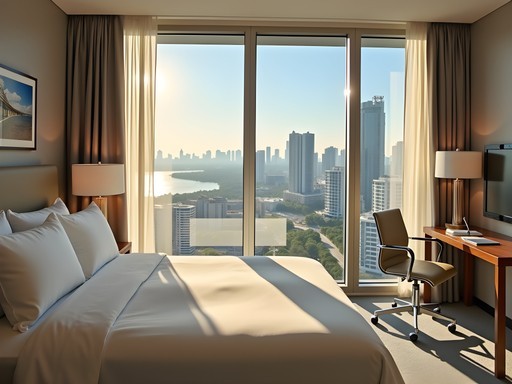


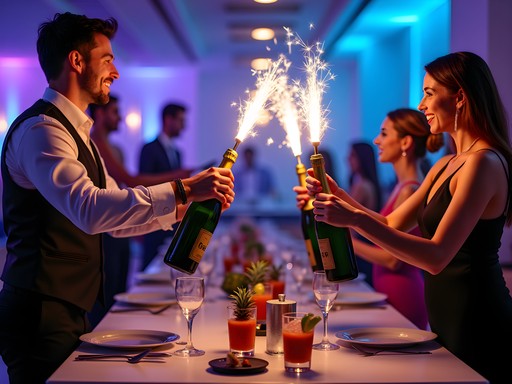

Comments
tripway
Just got back from Miami and followed your neighborhood guide - it completely changed our trip! We stayed in South Beach for two nights then moved to an Airbnb in Wynwood for the rest. The Wynwood Walls were incredible but we also loved just wandering the side streets where artists were actively working on new murals. Little Havana's food scene blew us away - we did a food tour with a local guide and tried everything from proper Cuban coffee to amazing empanadas. One thing that helped us was using the Metromover and trolley system instead of constantly using Ubers - saved money and got to see more of the city! I used my pocket guide to mark up all your recommendations before going.
escapeperson
How safe is Little Haiti for solo travelers? Planning a trip in November and want to see the authentic neighborhoods but heard mixed things.
escapestar
I went solo last year! Totally fine during daytime, just use normal city awareness. The cultural centers are very welcoming.
Nathan Mitchell
Like most urban areas, it's about being aware of your surroundings. I recommend visiting the main cultural spots during daytime hours and using ride-sharing services rather than wandering too far off the main streets. The Caribbean Marketplace and Little Haiti Cultural Center are absolutely worth visiting!
Gregory Boyd
Brilliant piece on Miami's hidden gems, Nathan. I spent three weeks exploring these neighborhoods last year and couldn't agree more about Wynwood's transformation. The contrast between the industrial warehouses and vibrant murals creates this fascinating urban canvas. One tip for visitors: go early morning (before 10am) to avoid crowds and get better photos. Little Havana was my personal favorite - the domino players at Maximo Gomez Park will chat with you for hours if you show genuine interest! Did you get a chance to explore any of the smaller art galleries in Little Haiti? Found some incredible local artists there that deserve more attention.
adventureseeker
Early morning Wynwood tip is gold! Got amazing pics without anyone in the background.
Nathan Mitchell
Thanks Gregory! I did explore a few galleries in Little Haiti - Laundromat Art Space and the Caribbean Marketplace were standouts. The grassroots art scene there feels so authentic compared to the more commercial spaces.
travelingteacher
Just got back from Miami last week and followed your neighborhood guide - it was spot on! Little Havana was the highlight for me. We did a food tour there (highly recommend) and learned so much about Cuban culture and history. The guide took us to places we never would have found on our own. Wynwood was cool but very crowded even on a weekday. Design District was a bit too upscale/shopping-focused for my taste, but the architecture was stunning. Didn't make it to Little Haiti this time - saving that for the next trip!
wanderlustdreams
Those street art photos are incredible! What camera did you use?
Nathan Mitchell
Thanks! I used my mirrorless camera for most shots, but honestly even a good smartphone camera can capture Wynwood's vibrant colors beautifully.
miamigirl305
As a local, I'd add that Wynwood has gotten pretty touristy lately. If you want a similar vibe with fewer crowds, check out the murals in Allapattah just west of Wynwood. Also, Ball & Chain in Little Havana has amazing live music on weekends!
freephotographer
Thanks for the insider tip! Any good coffee shops in Allapattah you'd recommend?
miamigirl305
Try Talavera Coffee! Small local spot with great Cuban coffee and pastries.
journeyway3488
Great article! I'm heading to Miami next week and definitely want to explore beyond South Beach. How walkable are these neighborhoods? I've heard mixed things about Miami's walkability. Also curious about Little Haiti - is it safe for a solo traveler during daytime? Any particular spots for authentic Haitian food you'd recommend?
Nathan Mitchell
Wynwood and Little Havana are quite walkable within each neighborhood, but you'll want to drive/rideshare between them. Little Haiti is fine during daytime but stay on main streets. For Haitian food, try Chef Creole or Piman Bouk - both are authentic and delicious!
journeyway3488
Perfect, thanks for the recommendations! Added those restaurants to my list.
Frank Garcia
Really appreciate this deeper dive into Miami's neighborhoods. I spent three weeks hopping between Wynwood and Little Havana last summer and the contrast is fascinating. The Wynwood Walls are obviously the main attraction but I'd recommend exploring the side streets too - some of the best artwork is tucked away where fewer tourists venture. For anyone concerned about getting around, I found Miami's public transit surprisingly workable despite what people say. The Metromover is free and connects downtown areas, while buses can get you to most neighborhoods mentioned here. Just download the Transit app beforehand and you're set. Little Havana at night has such a different energy - the live music spilling out from venues along Calle Ocho is an experience you won't find in guidebooks.
journeyway3488
Did you feel safe using public transport at night? Planning a solo trip and a bit concerned about getting back to my hotel after dark.
Frank Garcia
I stuck to Uber after 10pm just to be safe, especially when alone. During the day the transit system felt perfectly fine though!
freephotographer
Wynwood walls look amazing! Definitely putting this on my list for my trip next month.
Nathan Mitchell
Thanks! Make sure to visit on a weekday morning if you can - way fewer crowds and better for photos.
freephotographer
Great tip, thanks! Any particular murals I shouldn't miss?
Frank Garcia
Great post Nathan! I spent three weeks bouncing around Miami's neighborhoods last summer and completely agree that the city's true character lives beyond the beaches. Little Havana was my absolute favorite - I joined a local food tour that took us to all these family-owned spots tourists usually miss. The guide explained how the neighborhood has resisted gentrification while still evolving. One thing I'd add about Wynwood - it's becoming quite commercialized now. Some locals recommended checking out the emerging art scene in Allapattah just west of there. Fewer tourists and more authentic workshops where you can actually meet artists. I documented the whole experience in my travel journal which helped organize all the street art locations worth visiting.
wavemaster
That Allapattah tip is gold! Do you remember any specific galleries or spots there worth checking out?
Frank Garcia
Definitely check out Hometown BBQ (amazing food in a converted warehouse) and the Rubell Museum. There's also this cool spot called Bonci that has Roman-style pizza. The whole area is transforming but still feels authentic!
Venture X
Premium card with 2X miles, $300 travel credit, Priority Pass